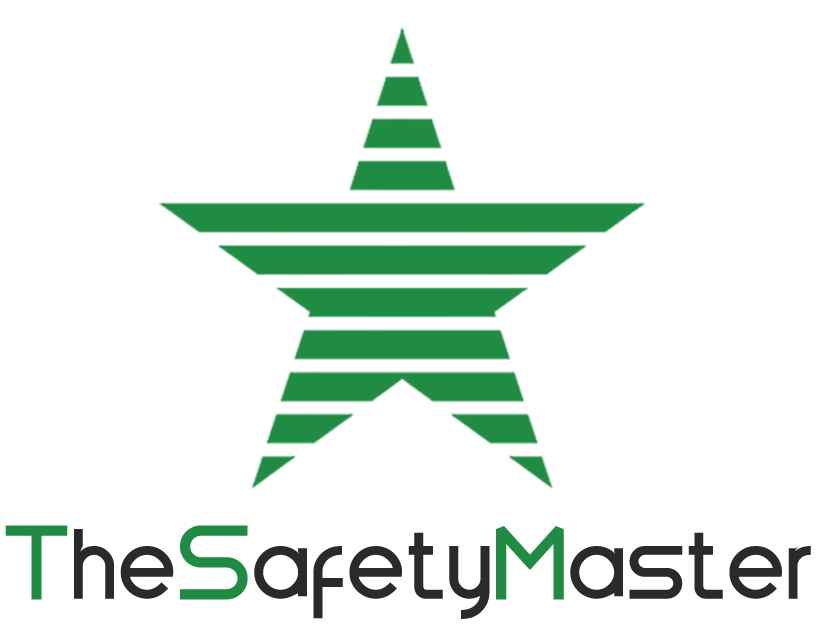Importance of HAZOP for Multiple Industries

Fire Load Calculation: Key Factors to Consider for Optimal Safety in Indian Industrial Settings
March 28, 2025
Comprehensive Guide to Fire Risk Assessment – Ensuring Safety
April 12, 2025What Is HAZOP and Why Is It Important?
HAZOP full form is Hazard and Operability Study, and it plays a very important role in industrial safety. It is a structured and systematic technique used to identify potential hazards and problems in any process or system. HAZOP is mainly used during the design stage or when making changes to existing systems. The main goal of a HAZOP study is to detect issues before they turn into real accidents.
HAZOP full form in safety reflects its focus on preventing harm to people, equipment, and the environment. When understanding HAZOP meaning, think of it as a team-based discussion where experts review each part of a process and ask “what if” something goes wrong. This is known as HAZOP analysis.
A good HAZOP example might be examining a chemical pipeline: What if the pressure is too high? What if the valve fails? These questions help identify weak points.
In simple terms, the HAZOP definition is all about spotting problems early. It helps industries improve safety, save costs, and follow regulations. That’s why a HAZOP study is considered essential in sectors like oil and gas, chemicals, and pharmaceuticals.
How Does HAZOP Improve Industrial Safety and Reliability?
HAZOP, or Hazard and Operability Study, is a key tool used to improve industrial safety and reliability. It works by identifying possible problems in a process before they happen. This proactive method helps companies make better decisions to avoid accidents and system failures.
One of the biggest strengths of a HAZOP study is its focus on safety, operability, and risk reduction. By carefully analyzing how a system should work and asking “what if” questions, the HAZOP team can find hidden dangers. For example, a HAZOP analysis might ask what would happen if pressure in a tank increases too much or if a valve gets stuck. These small checks can prevent big disasters.
By finding these issues early, HAZOP helps stop accidents, equipment damage, and production delays. This means less downtime and lower repair costs. A good HAZOP example is in the chemical industry, where a leak or temperature rise could lead to serious harm. Thanks to the HAZOP process, such risks can be reduced.
Overall, the HAZOP meaning is clear: it’s a powerful method to make industries safer, more reliable, and cost-effective. This is why many sectors rely on HAZOP for smooth and secure operations.
HAZOP is majorly used in the following industries
HAZOP (Hazard and Operability Study) plays a vital role in industries where safety, precision, and risk management are critical. It is especially important in high-risk sectors where complex processes and hazardous materials are involved. The chemical, petrochemical, oil and gas, pharmaceutical, and power generation industries use HAZOP studies to identify potential hazards, improve operability, and ensure regulatory compliance.
These industries face unique challenges such as toxic releases, explosion risks, and strict safety standards. By using HAZOP, they can detect issues early, prevent accidents, and protect both workers and the environment, making it a core part of their safety strategies.
- Chemical Industry
- Due to handling of hazardous chemicals, reactions, and potential for toxic releases.
- Due to handling of hazardous chemicals, reactions, and potential for toxic releases.
- Petrochemical Industry
- Similar to chemicals but with additional complexity from refining and synthesis processes.
- Similar to chemicals but with additional complexity from refining and synthesis processes.
- Oil and Gas Industry (Onshore & Offshore)
- High-pressure systems, flammable materials, and explosion risks make HAZOP critical.
- High-pressure systems, flammable materials, and explosion risks make HAZOP critical.
- Pharmaceutical Industry
- Ensures product purity, process safety, and compliance with regulatory bodies like FDA and WHO.
- Ensures product purity, process safety, and compliance with regulatory bodies like FDA and WHO.
- Power Generation and Energy Sector
- Involves high-voltage systems, steam boilers, and continuous operations, where safety is vital.
- Involves high-voltage systems, steam boilers, and continuous operations, where safety is vital.
These five industries rely heavily on HAZOP studies as a core part of their process safety management systems to prevent accidents, reduce risks, and ensure regulatory compliance.
Chemical Industry
In the chemical industry, safety is a top priority due to the handling of hazardous substances and complex chemical reactions. This is where HAZOP plays a key role. The HAZOP full form is Hazard and Operability Study, and it helps teams systematically review processes to spot potential issues before they become serious problems. A well-conducted HAZOP study can identify risks such as leaks, pressure build-ups, or unexpected reactions, all of which can lead to toxic releases.
Understanding the HAZOP meaning is important—it’s about asking the right questions to ensure both safety and operability. For example, a typical HAZOP analysis might explore what happens if a cooling system fails during a reaction. This kind of insight helps improve plant design and operational procedures.
Overall, the HAZOP definition highlights prevention and preparedness, which is why it remains a standard practice in the chemical industry for maintaining control and safety.
Petrochemical Industry
In the petrochemical industry, safety and precision are critical due to the handling of flammable substances and the complexity of refining and chemical synthesis processes. This is where HAZOP becomes an essential tool. The HAZOP full form, Hazard and Operability Study, represents a method used to carefully assess process risks and ensure safe operations. A well-planned HAZOP study helps teams identify what could go wrong at each stage of the process, from raw material handling to product storage.
The HAZOP meaning focuses on proactively finding potential failures—such as equipment malfunction or human error—that might lead to fires, explosions, or environmental harm. For instance, a HAZOP example could involve analyzing a high-pressure distillation column for possible deviations. This HAZOP analysis supports better process design and safety controls.
The HAZOP definition in the petrochemical sector aligns with regulatory standards and industry best practices, helping reduce risks and enhance overall plant reliability.
Oil and Gas Industry (Onshore & Offshore)
The oil and gas industry, both onshore and offshore, involves high-risk operations due to flammable materials, high-pressure systems, and remote locations. To manage these risks, companies rely heavily on HAZOP, which stands for Hazard and Operability Study. The HAZOP full form in safety reflects its core purpose—identifying potential hazards before they lead to serious incidents. A detailed HAZOP study allows safety teams to analyze processes such as drilling, refining, and gas separation to detect possible failures.
Understanding the HAZOP meaning is essential in this sector—it’s about ensuring equipment, processes, and people work safely together. For example, a HAZOP example in offshore drilling might examine what could happen if pressure relief valves fail. Through this HAZOP analysis, teams can take early action to avoid accidents, downtime, or environmental damage.
The HAZOP definition aligns perfectly with the oil and gas industry’s need for strict safety control, regulatory compliance, and continuous operation.
Pharmaceutical Industry
In the pharmaceutical industry, maintaining product quality and patient safety is non-negotiable. Processes must follow strict regulatory standards, which is why the use of HAZOP—short for Hazard and Operability Study—is so important. The HAZOP full form in safety highlights its role in identifying process risks and ensuring smooth, controlled operations. A detailed HAZOP study helps detect issues like equipment failure, contamination risks, or deviations in temperature and pressure, all of which can affect product purity.
The true HAZOP meaning in this industry lies in safeguarding both people and products. For example, a HAZOP example might involve checking what could happen if a mixing tank overheats during drug production. Through this type of HAZOP analysis, companies can prevent costly recalls, regulatory penalties, or safety incidents.
Overall, the HAZOP definition reflects a proactive approach, making it a critical tool for pharmaceutical companies to meet compliance, reduce risks, and deliver safe, effective products.
Power Generation and Energy Sector
In the power generation and energy sector, safety and reliability are essential due to the use of high-pressure steam, high-voltage equipment, and continuous operations. This is where HAZOP—Hazard and Operability Study—becomes highly valuable. The HAZOP full form in safety reflects its purpose of identifying risks before they lead to breakdowns or accidents. A proper HAZOP study helps analyze systems like boilers, turbines, and control units to detect possible failures.
The HAZOP meaning in this sector is all about ensuring smooth operation while protecting people, equipment, and the environment. For example, a HAZOP example could involve reviewing what might happen if a cooling system in a power plant stops working. This type of HAZOP analysis allows engineers to spot weak points and create preventive solutions.
By following the HAZOP definition, energy companies can avoid unplanned shutdowns, equipment damage, and safety hazards, all while meeting regulatory standards and improving operational efficiency.
What Are the Broader Benefits of HAZOP Across All Industries?
Across all industries, HAZOP offers broad benefits that go beyond just preventing accidents. A well-structured HAZOP Study helps organizations boost operational efficiency by identifying hidden risks, improving process design, and reducing downtime. It also supports companies in meeting industry-specific regulations, promoting long-term sustainability. From manufacturing to pharmaceuticals, this approach strengthens workplace safety and process reliability.
Companies like The Safety Master use HAZOP as part of a larger safety strategy, including services like Fire Audit and Safety Audit, to create a comprehensive risk management system. Integrating HAZOP with Process Safety Management ensures every process is regularly reviewed and optimized for safety and compliance.
With the guidance of a trusted Safety Consultant, businesses can build a proactive safety culture. This not only protects employees and assets but also enhances productivity and reputation across sectors, making HAZOP a smart investment for every industry.
Why Should Every Industry Invest in HAZOP? Recap of HAZOP’s importance across sectors
HAZOP is not just a safety tool—it’s a smart investment for every industry that values risk prevention, operational efficiency, and long-term sustainability. From chemicals to energy, a HAZOP study helps identify potential hazards before they turn into real incidents. Its structured approach ensures safer processes, better compliance, and fewer disruptions. Every industry, regardless of its size or complexity, can benefit from proactive safety planning. Partnering with experts like The Safety Master ensures that safety is not reactive but built into the system. Investing in HAZOP today means creating a safer, more reliable tomorrow for your business and workforce.




